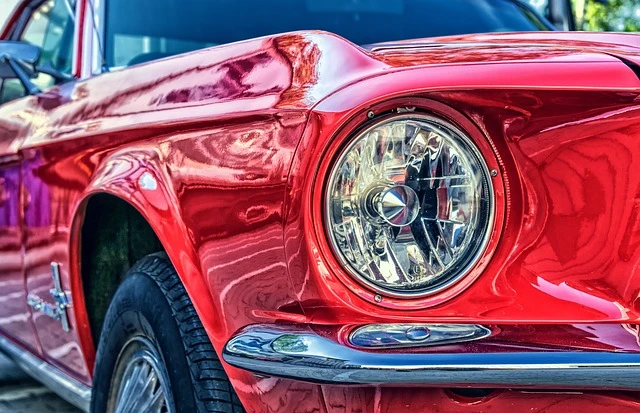Environment
Hydrogen-Fuelled Hiace Van Tested for Light Commercial Duties

Fancy a new van for the business? Like, I mean a really cool new van that runs on hydrogen… Well, this fancy might just be getting fulfilled a little sooner thanks to some Australian business owners who have been given a Toyota Hiace with a hydrogen-powered internal combustion engine (ICE). Yes, that’s right – hydrogen ICE – like the old school ICEs but with new technology that can allow for the cleaner burning hydrogen fuel to be burned as a much cleaner option.
Toyota’s Hydrogen Hiace Van has been undergoing testing by local businesses to see how the hydrogen ICE performs and fulfils its role for powering the Toyota Hiace van while it carries out its daily duties in the real world. If the testing goes well, showing that Toyota’s new Hydrogen ICE is a goodie, then the legendary car manufacturer will set about putting these sorts of vehicles into production.
Let’s start with what’s under the bonnet?
Toyota has designed and built the van’s hydrogen ICE, which is based on the V6 turbo-petrol ICE used in the Land Cruiser 300 model series. The LX600’s 10-speed automatic transmission has been retained in the test van, but it runs with rear-wheel-drive rather than the Land Cruiser’s all-wheel drive system. In petrol form, the V6 is able to pump out 305 kW of power and 650 Nm of torque. In hydrogen form, with the relatively minor changes, the motor puts out a decent 120 kW and 354 Nm. Toyota engineers deliberately matched the 120-kW output found in the standard Hiace 2.8-litre turbodiesel that is currently for sale. The diesel unit provides 66 Nm more torque; however, the new hydrogen ICE prototype’s output and torque sounds pretty decent for a Hiace van, which will be used primarily in business logistics and, obviously, as a trade van, which is classed in the light commercial segment.
The hydrogen fuel is stored under the van’s floor in three tanks, which is good for a range of up to 200 km. What about the emissions from the exhaust? Tailpipe emissions amount to a little bit of nitrogen oxide, and that’s it.
So why hydrogen instead of an EV Hiace?
There is the lack of emissions, but also the fact that a hydrogen Hiace van can theoretically be put into production quickly without any major changes to Toyota’s supply chain, which make the hydrogen alternative desirable from a cost and logistical point of view.

There is also the fact that Toyota gurus, and other tests, have shown that electric vehicles lose a significant amount of range when they are fully loaded up, working hard, or used for towing. Add in the fact that the van shape isn’t the most aerodynamic outline on the market, then we can see why an EV van starts to look a bit sketchy in the real world. Hydrogen, as a fuel, is far more suited for a van that will work hard with heavy loads on board, run against headwinds, or be used for towing. With hydrogen, the driving range is not as significantly impacted as what it is in an EV alternative, so the panic of running out of battery range in between jobs won’t be a concerning issue for your typical tradie – or the person waiting for the plumber to turn up to fix the loo.
Toyota is likely to bring out an Electric Hiace anyway, but they would also like to be able to provide a hydrogen Hiace in the future as well; obviously not straight away, but for when the infrastructure for hydrogen refuelling does become a reality.
On all accounts, it seems that it the prototype Toyota Hiace Hydrogen Van is capable of doing its job well, and really could be all ready for action at the drop of a hat or once the hydrogen infrastructure arrives.
Hydrogen-Based ICE?

How does a 2.0-litre 4-cylinder engine boasting 302 kW of power at 6500 rpm and 500 Nm of torque between 3000 and 4000 rpm sound to you? To my ears, this is pretty impressive stuff on any given day.
Big entities AVL Racetech and Hungarian HUMDA Lab have used their know-how to work on advancing the hydrogen internal combustion engine (H2 ICE). These engines have long been known for their low performance and lean-burning capacity, but AVL Racetech and Hungarian HUMDA Lab have succeeded in producing something that changes this impression completely.
According to Toyota, the future of vehicle transport and mobility lies in this new type of engine and its resulting powertrains. The 2.0-litre H2 ICE was put through its paces on a testbed and confirmed that the following top values calculated previously in simulations were a reality. Apart from the benefits that the H2 ICE has for the planet in reducing fuel emissions, the level of power that this new technology can produce is staggering.
To put some context on the level of power that this 2.0-litre H2 ICE motor produces, let’s think of it this way. The brand new engine can reach highs of around 153 kW (205 horsepower) per litre, which is even more than the Bugatti Chiron’s 185 horses per litre!
Cleverly designed PFI water injection systems moderate the combustion in the chambers and prevent any potential engine damage from occurring. The PFI water injection system introduces water into the intake air, which improves pressure levels. It also reduces the temperature of the combustion chamber as it evaporates. The air demand, which is lower than during lean combustion, is provided by a waste gate turbocharger that has been especially designed for the sole purpose of improving pressure levels and reducing the combustion chamber’s temperatures.
The H2 ICE process differs from hydrogen combustion in a fuel-cell vehicle, which works more along the lines of a traditional engine but using hydrogen instead of gasoline. So, the H2 ICE converts hydrogen into electrical energy to power an electric motor.
The H2 ICE project leader, Paul Kapus, Manager of Development Spark Ignited Engines, stated that. “At the end of 2022, we announced for the first time, that we would be working on a two-litre, hydrogen-powered racing engine with stoichiometric combustion and PFI water injection… Our goals were 500 Nm of torque and an output of up to 300 kW… We are proud to have been able to validate those figures on the testbed.”
Ellen Lohr, the director of Motorsport AVL, mentioned that the results of the testing of the new motor means that it is a competitive racing package with this technology. The goal for the AVL Racetech team is to lead motorsport into a sustainable future. The next step will be to test the new H2 ICE concept in the heat of battle on a racetrack.
This technology could surely influence the direction of EVs into the future. Watch this space!
Carnauba Wax: Giving Your Car A Brazilian

Christmas is just around the corner, and many car enthusiasts have a pretty shrewd guess that one of their relatives will give them car wash products as a present. Polish and all the rest of it is one of those go-to presents, along with socks and underpants for guys, and bath salts or scented soaps for girls. One of those products may, if you’re lucky, contain carnauba wax (note: this statement applies to the car cleaning products, not the undies or bath salts).
I used to think that carnauba wax was a brand name and I wasn’t the only one to think this, I discovered after a few quick conversations with friends. However, this isn’t the case. Carnauba wax is a generic plant-based product that is known for its high shine and toughness.
These days, it’s nice to be using something that originally comes from a plant rather than being stirred up in a lab. This is the case for carnauba wax, although your car polish will be stirred up in a lab somewhere, and the wax goes through a fair amount of processing before it gets into the package waiting for you in your Christmas stocking. It’s a product from the leaves of a palm tree that grows only in parts of Brazil, which is why you’ll also hear this wax being called “Brazil wax” or “palm wax”. The name “Brazil wax” is out of fashion at the moment, probably because that term has another meaning – although you can use carnauba wax for a Brazilian wax.
The palm tree in question is Copernicia prunifera or the carnauba palm, and the wax is just one of its many products. Although the tree is grown extensively in the suitable parts of Brazil commercially to get this highly desirable wax, the rest of the tree is pretty useful as well. It produces fruits that are used as animal feed, and for making jelly and a type of flour, and even coffee substitutes and oil. The wood is resistant to termites and is good for making houses in the local area that resist these pests. The leftover bits of the leaves after the wax has been removed are used for textiles or are used as feedstock for biofuels. And just in case that wasn’t enough to give the carnauba palm plenty of green credit, it also grows well in saline soils that aren’t any good for other crops, it’s resistant to drought, and because the trees aren’t cut down to harvest the leaves, they provide a good habitat and food for wild birds and sequester carbon while they’re at it. Wins all round!
The leaves of the carnauba palm have a natural wax coating that help it retain moisture and to stand up to other stresses, such as insect attacks. After the leaves have been cut from the trees, which is done a couple of times during the dry season, they are left to dry in the sun. This makes the wax dry to a crumbly yellow-white powder. After that, the leaves are beaten out to release the wax, and the powdered wax is collected. Various other things can be done to it before it’s exported. In fact, because of the properties of the wax in its raw state, you wouldn’t be able to do much with it unless you mixed it with this and that and/or refined it.
Carnauba wax has about the highest melting point of all the natural waxes: a shade over 80°C, in contrast to beeswax, which melts at around the 60-degree mark. It’s also very hard as well as being able to produce a high shine. This makes it perfect for use in a polish for cars, as it’s long-lasting and good-looking as well as being protective.
As well as being used in car polishes, carnauba wax turns up in a variety of other products. As it’s plant-based and nontoxic, it’s safe to use in cosmetics such as lipsticks (another go-to Christmas gift for women) and for coating some types of sweets, such as M&M chocolates (yet another generic gift idea). As a food additive, it’s got the E-number E903. It also turns up in surfboard wax, shoe polish, dental floss and furniture polish. But don’t try eating your car polish. The carnauba wax will have been mixed with various solvents to make the polish.
Car wash products containing carnauba wax come in three types: pastes, sprays and liquids. Pastes are the purest form of the product and are the most long-lasting, although it requires a fair amount of elbow grease and/or professional tools to apply properly. Sprays are the easiest to apply but don’t last as long. Liquid forms of carnauba wax are in the middle, being fairly easy to apply but longer-lasting than a spray.
Some synthetic waxes last longer than carnauba wax, which lasts about 3–5 months, depending on where you keep your car, the weather, how many incontinent seagulls have flown overhead, how often you wash your car, etc. However, carnauba wax is cheaper, as well as being a natural product with all the benefits mentioned above.
The only real downside about carnauba wax is the fact that some of the commercial plantations and harvesting operations pay their workers poorly – and it’s quite a labour-intensive job that can be and is done by hand. Although some organizations are getting their act together to ensure that their carnauba wax comes from properly responsible suppliers that treat their workers right, even this isn’t without its problems, given that carnauba wax comes from Brazil and only from Brazil, and that this is a country that got a score of 38/100 in the latest corruption index (where 0 is totally corrupt and 100 is not corruption whatsoever; Australia has a score of 75/100) and – at least according to my Brazilian sister-in-law who has friends and relatives in the coffee industry – producers have to pay a hefty fee to get Fair Trade certification, which puts off a lot of smaller cooperatives from getting this certification. So things get a bit messy on the ethical front. I’d still rather buy a product that’s got a natural origin, is good for the environment and keeps real humans employed instead of robots. In my books, it comes down more on the Nice side of the ledger rather than the Naughty side.
One last warning: if you want to put carnauba wax on your wish list for gifts, make sure that you (a) specify that you want the automotive sort, not the cosmetic sort and (b) call it carnauba wax, not Brazil wax or Brazilian wax, or you never know what you might end up with.

What to Look for When Buying an Eco-Friendly Car
With emissions concerns becoming an ever-growing concern among new car buyers, many motorists are turning to eco-friendly cars in the hope they not only reduce their carbon footprint, but also lower their operating expenses as well.
As motorists start to see a wider range of eco-friendly cars pop onto the market, consumer choice has been broadened significantly, even if still some way behind internal combustion engine (ICE) vehicles.

Hybrid vehicles
Hybrids offer the best of both words as far as petrol and electric. The general notion is that the car will switch between the two systems in order to maximise efficiency.
For example, when the car is stationary, accelerating or driving at a low speed, the electric engine will kick in. While cruising at a higher speed, however, the petrol engine starts to take over and power the car. The petrol engine can also recharge the battery itself, which means you don’t have to be sitting at home or a designated charging spot waiting to recharge your car before setting out on your journey.
Electric vehicles
Meanwhile, electric vehicles are starting to see their penetration increase just like hybrid vehicles did a few years ago.
EVs rely exclusively on battery-power and charging, which has been a deterrent to many because of the limited range and infrastructure to cater to this. At the same time, charging points at home aren’t necessarily as economical as one might hope in this day and age. But both of those factors are improving.
Improvements to the range of electric vehicles have allowed them to drive further than previously possible. Long gone are the perception surrounding the limited driving ranges of first-to-market EVs. However, despite potentially lower ongoing running and maintenance costs, EV purchase prices have yet to truly become accessible to the mainstream consumer.

What to keep an eye on
One of the key measures as to how eco-friendly or green a vehicle is based on their emissions output.
Hybrid vehicles are still associated with emissions because of their dual functionality, while electric vehicles may also be tied to some emissions where the source of electricity charging the vehicle is not renewable. For example, one might argue that coal-generated electricity defeats the point of an EV.
The ratings for emissions outputs also vary in the real world compared with in lab or track testing. It’s one thing for manufacturers to spruik certain numbers based on ‘perfect’ conditions, however, outside of that bubble we all know that things are never quite the same in the real world.
Let’s not also forget that, ‘Dieselgate’, one of the biggest controversies in the motoring industry related to such discrepancies, even if related to diesel-powered vehicles.
Last but not least, uptake for both hybrids and EVs is a gradual process at this stage. Prices are still elevated, particularly when compared against other international markets where these vehicles have yielded greater uptake.
A large part of that is attributable to government policy and support, however, for motorists looking to make the early switch, there are benefits associated with lower operating expenses, but one must ensure they can afford to purchase or finance what are dearer vehicles to begin with.